Beaujolais , traveling towards the Holy Land of Bourgogne
- Paolo Mittiga

- Jun 15, 2019
- 8 min read
Updated: Dec 5, 2020
On May through June 2019 we visited Beaujolais, Bourgogne and finally the Loire Valley. These series if blogs are about these wines areas of France, the impressions, the surprises, the beautiful landscapes.
Lyon where we landed is definitely an electric city, an exciting one. It has the highest number of Michelin starred restaurants in France. The Saone and the Rhone rivers run through it . The Saone is well over 300 miles and runs through the center of France from the Vosges Mountains where it originates and meets the mighty Rhone in Lyon just south of the Presquile in its journey to the Mediterranean sea.
According to the historian Dio Cassius, in 43 BC, the Roman Senate ordered the creation of a settlement for Roman refugees of war with the Allobroges. These refugees had been expelled from Vienne and were now encamped at the confluence of the Saône and Rhône rivers. The foundation was built on Fourvière hill and officially called Colonia Copia Felix Munatia, a name invoking prosperity and the blessing of the gods. The city became increasingly referred to as Lugdunum. Therefore the city has a long history as shown in the different sites we visited.
As I mentioned , The Rhône and Saône converge to the south of the historic city centre forming a peninsula – the "Presqu'île" – bounded by two large hills to the west and north and a large plain eastward. Place Bellecour is located on the Presqu'île between the two rivers and is the third-largest public square in France. The broad, pedestrian-only Rue de la République leads north from Place Bellecour.
The northern hill is La Croix-Rousse, known as "the hill that works" because it is traditionally home to many small silk workshops, an industry for which the city has long been renowned.
The western hill is the Fourvière, known as "the hill that prays" because it is the location for the basilica of Notre-Dame de Fourvière, several convents, and the residence of the Archbishop. The district, Vieux Lyon, also hosts the Tour métallique (a highly visible TV tower, replicating the last stage of the Eiffel Tower) and one of the city's funicular railways. Fourvière, along with portions of the Presqu'île and much of La Croix-Rousse, is designated as a UNESCO World Heritage site.
East of the Rhône from the Presqu'île is a large flat area upon which sits much of modern Lyon and contains most of the city's population. Situated in this area is the urban centre of La Part-Dieu which clusters the landmark structures Tour Part-Dieu, Tour Oxygène, and Tour Swiss Life, as well as the city's primary railway station, Gare de Lyon-Part-Dieu.
Despite the highest number of Michelin star rated restaurants we tried to make reservation for dinner in any of the Michelin starred restaurants and we got disappointed to find out that it was quite impossible unless you were a famous star or part of the entourage. Ok, to be fair if we planned it properly ahead of time I bet, we would have tried those delicious meals.
But Enough about Lyon, I am here to introduce Beaujolais , the surrounding wine producing zone. Most of their wines are drank in the city of Lyon and many exported to USA of course and to China.
Beaujolais is divided in two main areas, the southern part and the Northern part separated by the river Nizerand, near the town of Villefranche sur Saone. Before we started our adventure within the area we visited this beautiful little town, very elegant with a long main street filled with shops, bars and small restaurants. Of course the weather on those first few days was gorgeous, the spring was letting the summer in, there was almost an heat wave as we strolled through the quaint streets.
Beaujolais produce white and red wines, the reds are almost 100% gamay, that was outlawed from the area of Bourgogne from the Dukes, to let the palate of the courts only to enjoy Pinot Noir, considered a noble grape. Interestingly enough the whole area is a site for geology study. Over 300 millions of years ago there was plenty of Volcanic activity in the area, the granite that characterizes the subsoil of the northern Beaujolais was formed through that period and pushed to the surface 33 millions of years ago with the Massif Central. This process metamorphosed lava and ash into foliated rock, called schist. Instead the Southern part of the region is clay and limestones the same one that formed in the Maconnais, in the south you can find the broken yellow limestone known as Pierres Dorees.
By no surprise the best vineyards are located on the steep granite of the Monts du Beaujolais in the North-western part of the region, the area where the Crus AOC are located. I wanted to quickly explain the different soils of Northern and Southern Beaujolais because Gamay is very sensitive to the soils where is grown. On granite and Schist it delivers, structured, complex wines like manifested in the crus. On Limestone and Clay it delivers lighter, fruitier, easy drinking ones.
WE drove through the Southern part directed to North to discover the Crus regions. We learned that after 2:15 PM, the areas are quite desolated, there is not food to eat, everybody takes an afternoon nap. Especially during such heat wave. So without the ability to taste wine, but above all any food, we walked through a desolated area, which regardless caught our eyes for its beauty and its landscape.
Wine is the primary industry here and the stone roads and the buildings were arranged with all sorts of cartoons and pictures to remember the people like us we were driving though a wine producing area.
However, what better than Fresh air, the smell of the wines and serenity? So on empty stomachs and longing to taste the wines, we were back on the road towards the Crus area of Beaujolais.
The southern Crus area is Bruilly and the Cote de Bruilly.

We could admire the goblet trained vines. It is a training system where there is no wire to support the vines, it keeps them very close to the ground and reduces the yields, therefore improving the quality of the grape and ultimately of the wine.

Although it was demanded by law in the Crus area, now the Cordon and also the Guyot training methods were adopted which simplify an optimize the growing of the grapes but the increased yield would require a very labor intensive green harvesting to reduce it.
We climbed the high hill that took us to the peak at 1200 feet where a small Church dedicated to Notre Dame was open, showing us how important are the prayers to Mary in order to get a good harvest, especially in an area with a semi continental climate. Why Semi-Continental? Because of the relative vicinity of the Mediterranean Sea, which allows to mitigate the Climate. Nevertheless, one thing was sure that day , there was no Sea Breeze to alleviate the heat and find some solace.
As we left the Southern part of Beaujolais by reaching Brouilly and Cote de Brouilly, we left behind the largest production of Beaujolais and Beaujolais Superieur that are confined to the Southern Limestone soils. Their wines are less structured, more fruity and definitely easy drinking wines. Here the maceration used is also called semi carbonic, which is different from the traditional yeast alcoholic driven Burgundian one. The maceration happens within the berry and it is enzymatic in nature and managed it in an anaerobic environment caused by the fermentation itself.
This type of maceration imparts the typical fruity flavors , the banana and sometimes chewing gum of the simplest wines.
The Beaujelais Village wines, are of higher quality and mostly made in the Northern territory with the granite subsoil. These wines are better value wines with a quality/price ration much higher than the basic ones. Not all of them use carbonic macerations and most are aged in wood for a few months. They have bigger bodies, less fruit forward but a much better structure.
How can we talk about Beaujolais without mentioning the extremely well known Nouveau, especially for us Americans as it is delivered the third Thursday of November ... well around our Thanksgiving and the light wines are a perfect pairing for the Turkey and all the delicacies of one of our most famous Holiday. These wines definitely use the semi carbonic macerations and are only left for a few days to macerate and then immediately bottled without any aging at all, to keep the freshness of the wines.
There are a whooping 50 millions of Nouveau produced every year. To highlight here that here is not an AOC representing the Nouveau but rather they are part of the generic bottling or the Villages. SO my suggestion is always try to purchase at the least a Village based wine if you can.
But it would be unfair to make Beaujolais just about Nouveau. There are really beautiful wines crafted in the crus area, in the Northern part.
There are 10 towns which represents the crus for Beaujolais , The one we reached climbing to the peak and then to the North: Regnie ( the newest one), Morgon that we drove and finally were able to taste some good wines ( in a second), then Chiroubles, Fleurie, Moulin a Vent, Chenas, Julienas, Saint Amour.
Domains Dominique Piron
It was almost 3 PM when we finally reached Morgon and found a winery opened. We stopped at Domains Dominique Piron, a medium larger producer located in the Morgon area. Mr Dominique was resting in the shades on the terrace above the cellar and production area, initially it must have been bothered by our insistence to visit the winery and try its wines, we were very excited because finally we could try some of the local wines.
He was a man in his late 50s early 60s, very nice to open the cellar just for us to introduce his company in his good English and to show us around. The winemaker, who is celebrating his 51th vinification this year, didn’t hide his satisfaction regarding last year happy vintage. After a difficult decade fraught with hail, frost and small harvests, 2018 will be known for its absence of disease, a dry summer, a good harvest both in terms of quality and quantity. “It will be a superb vintage. For the moment, everything we’ve tasted is good,” he enthused.
The 14th generation of winemakers working in Morgon for the past 400 years, Dominique Piron cultivates around a hundred hectares of vines in the Morgon, Chénas and Beaujolais Villages appellations. Known for having been the first winemaker in the region to buy grapes and the vinify them, Piron tells us about his years of experience as well as his progress in terms of technique.
Over time, he and his peers have perfected the vinifications, thereby producing wines of better quality. However today, where true progress needs to be made is on the soil and the plant. “Unfortunately, people concentrate too much on numbers and marketing, yet the best marketing is that of having a good product.”
It goes without saying that, in order to make a good wine, you must have good grapes. Dominique Piron is worried about his customers’ consumption and concentrates on producing “clear, clean and precise cuvées”. Thus, while his domain is not certified organic or biodynamic, he cultivates his vines as cleanly as possible, because, “being in harmony with nature means cherishing it and working with motivation.”
He has passed on this philosophy to his entire team and has since obtained the HVE label (Haute Valeur Environnementale – high environmental value). As it showed us around it caught my eyes that the winery was much larger inside that would appear from the outside, producing few hundreds of thousands of bottled, mostly exported in US and delivered to Lyon, where the thirst of good Beaujolais wasn't lacking. The wine we tried were of great quality ( I will write a formal wine tasting notes once i proper taste the wines I purchased). We reluctantly left the site, he politely said good bye and we promise to let him know once we try his wines.
Back on the road towards North, where Macon was waiting for us, but still so much to see in Beaujolais. The next articles we will explore on of the best cru of Beaujolais : Moulin a Vent. Stay tuned





















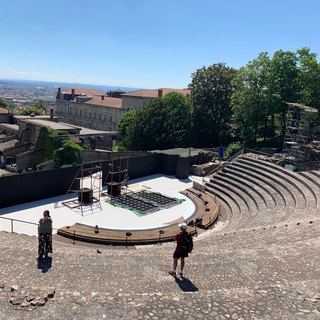





































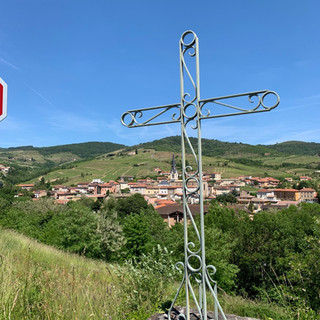

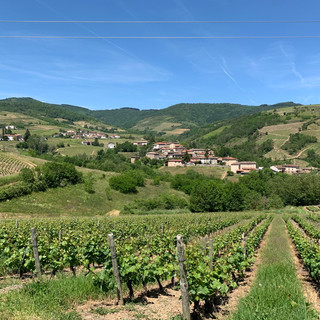













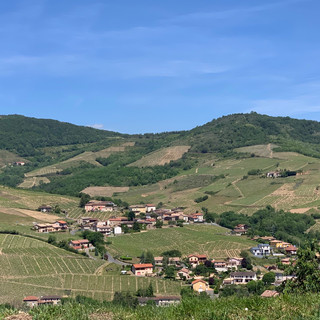



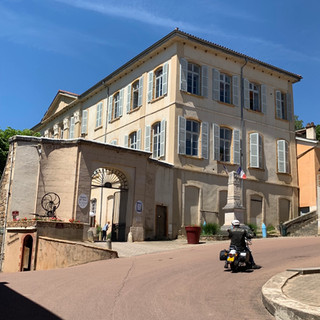






















































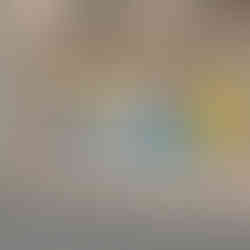


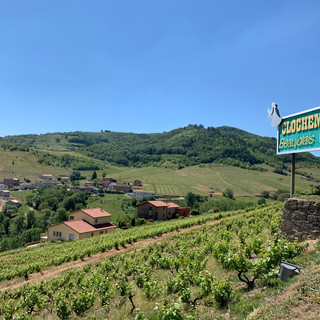







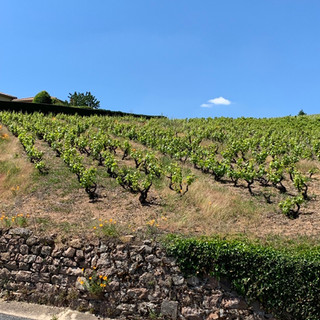









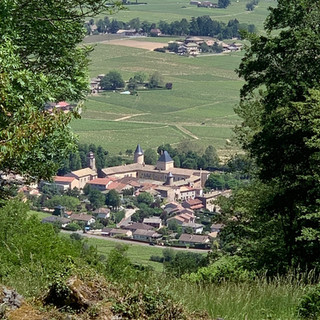

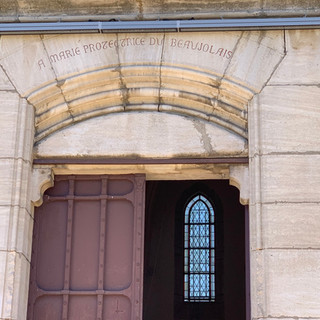





































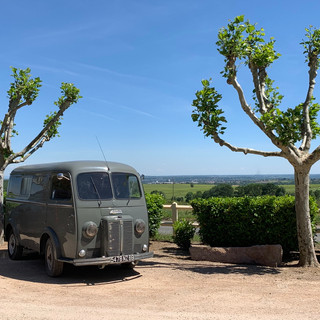




Comments